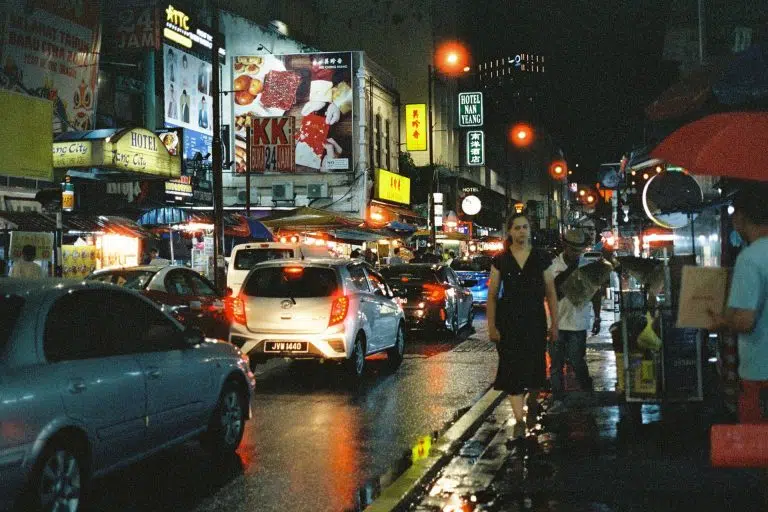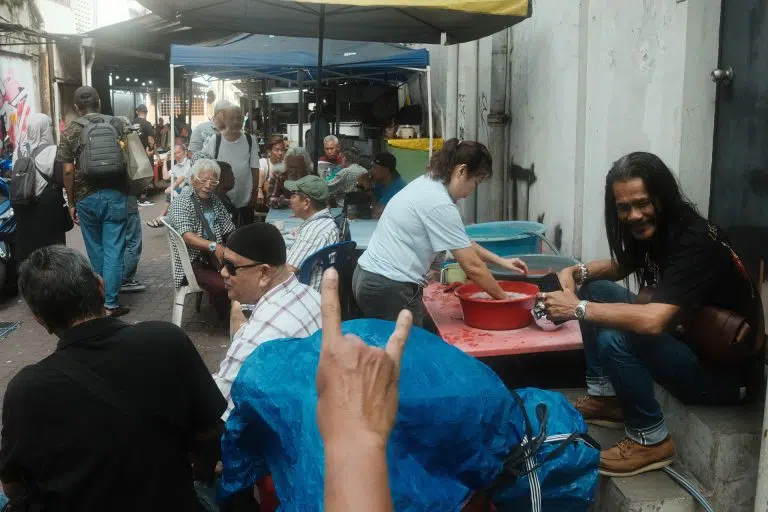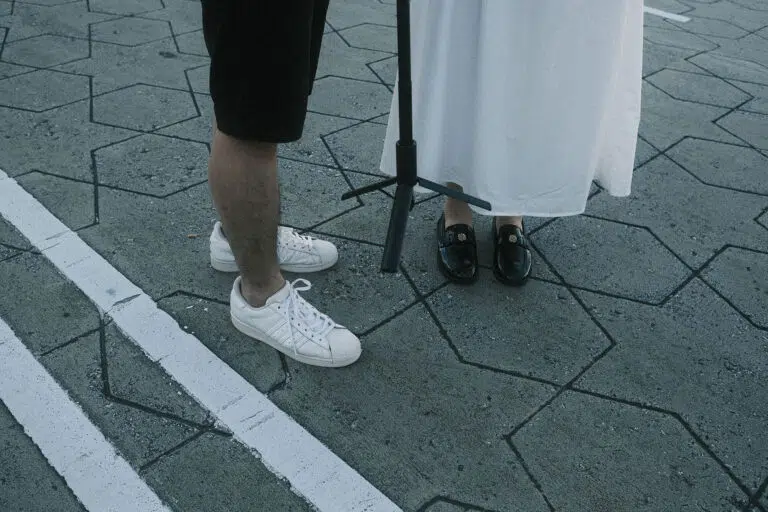Table of Contents
Night street photography has been my favorite and it presents unique challenges and opportunities. You need the right camera settings to capture stunning images in low light. In this guide, we’ll explore the best camera settings for night street photography, helping you make the most of every shot.
I’ve been shooting night street photos for a while, starting with my trusted Contax G1 film camera (see my 500T film shots) and continuing with my Fujifilm X-T4 since I began photography a few years ago.
I consistently shoot at slow shutter speeds of 1/125 or lower, wide-open apertures ensuring sharpness and capturing the essence of the night scenes. I enhance my shots with FX lens filters to achieve a creative and cinematic look.
As a creator of Fujifilm recipes, I’ve tested many low-light film recipe combinations, each providing distinct and wonderful color tones that enhance my artistic vision.
This camera settings guide for night street photography will help you understand which ISO, shutter speed, and aperture to use during nighttime.
Mastering ISO: Best Camera Settings for Night Street Photography
ISO sensitivity is crucial in night street photography, determining how your camera responds to available light. Choosing a higher ISO enables quicker shutter speeds and narrower apertures, crucial for capturing clear images in low-light settings.
However, higher ISO settings can introduce digital noise, impacting image quality. Balancing ISO to suit ambient lighting conditions while maintaining image clarity is key to successful night street photography.
Always look for well-lit areas, such as places with tungsten lighting, street lights, neon signs, or illuminated signboards that emit ambient light.
With advancements in camera technology and sensors, higher ISO settings are less problematic than before. It’s often recommended to use auto ISO settings, which typically max out around 6400 ISO. This allows the camera to adjust ISO automatically based on lighting conditions, ensuring optimal exposure without excessive noise in your photos.
Choosing the Right Shutter Speed for Night Shots
Shutter speed significantly influences the depiction of motion and light in night street photography. A slower shutter speed, such as 1/125 or lower, enables longer exposures, capturing the flow of movement and enhancing ambient light trails.
Conversely, faster shutter speeds freeze action but require adequate ambient light or wider apertures to maintain proper exposure. Understanding how shutter speed affects your composition allows for creative control of overnight scenes.
If your shutter speed is low, think about using a tripod to prevent blurry images from shaky hands. Using a higher shutter speed in low light situation will also impact your ISO and aperture settings.
Optimal Aperture Settings for Night Street Photography
Aperture plays a pivotal role in controlling depth of field and light intake during night street photography. Wider apertures (lower f-numbers) such as f/1.4 to f/2.8 allow more light to reach the sensor, facilitating faster shutter speeds and emphasizing selective focus on subjects amidst blurred backgrounds.
Narrower apertures (higher f-numbers) increase the depth of field, ideal for capturing intricate details across a broader range within the frame. Choosing the appropriate aperture setting ensures clarity and artistic intent in nocturnal compositions.
When using higher f-numbers, you may need to use lower shutter speeds. As mentioned, aperture settings affect both ISO and shutter speed, which regulate the amount of light reaching your sensor.
Balancing Exposure with Night Street Photography
Achieving balanced exposure in night street photography demands careful consideration of ISO, shutter speed, and aperture settings. Metering techniques such as spot metering or using the camera’s histogram guide exposure adjustments, ensuring optimal brightness levels without overexposure or underexposure.
Experimenting with exposure compensation and manual adjustments empowers photographers to refine their vision and adapt to diverse lighting conditions encountered on nocturnal streets.
Conclusion
Mastering the best camera settings for night street photography elevates your ability to capture evocative images that resonate with atmosphere and emotion. By harnessing the interplay of ISO sensitivity, shutter speed settings in camera, aperture settings, and exposure techniques, you can unlock the full potential of nocturnal scenes.
Consider using flash in night photography to illuminate subjects, fill in shadows, and balance ambient light. Choose an external flash such as the Godox Lux Junior or LightPix Labs FlashQ Q20II for control and experiment with settings to achieve optimal results and creative effects.
Whether you prefer the tactile experience of film or the versatility of digital cameras like the Fujifilm X-T4, these insights will empower you to explore and express your creativity in the vibrant world of night street photography.
This ‘Best Camera Settings for Night Street Photography’ guide serves as a comprehensive resource for photographers seeking to refine their photography techniques, compositions and expand their artistic photography skills horizons through night street photography. Embrace the challenges, seize the opportunities, and illuminate the nocturnal beauty that awaits your lens.




